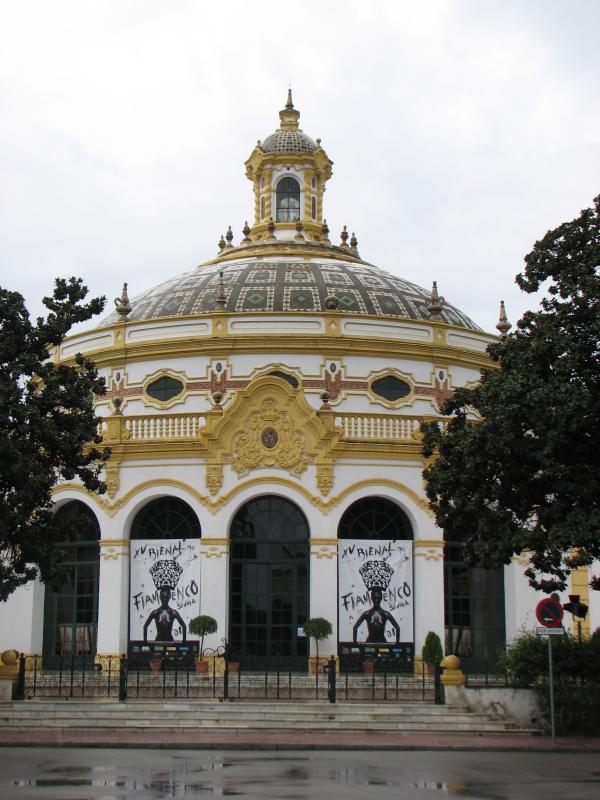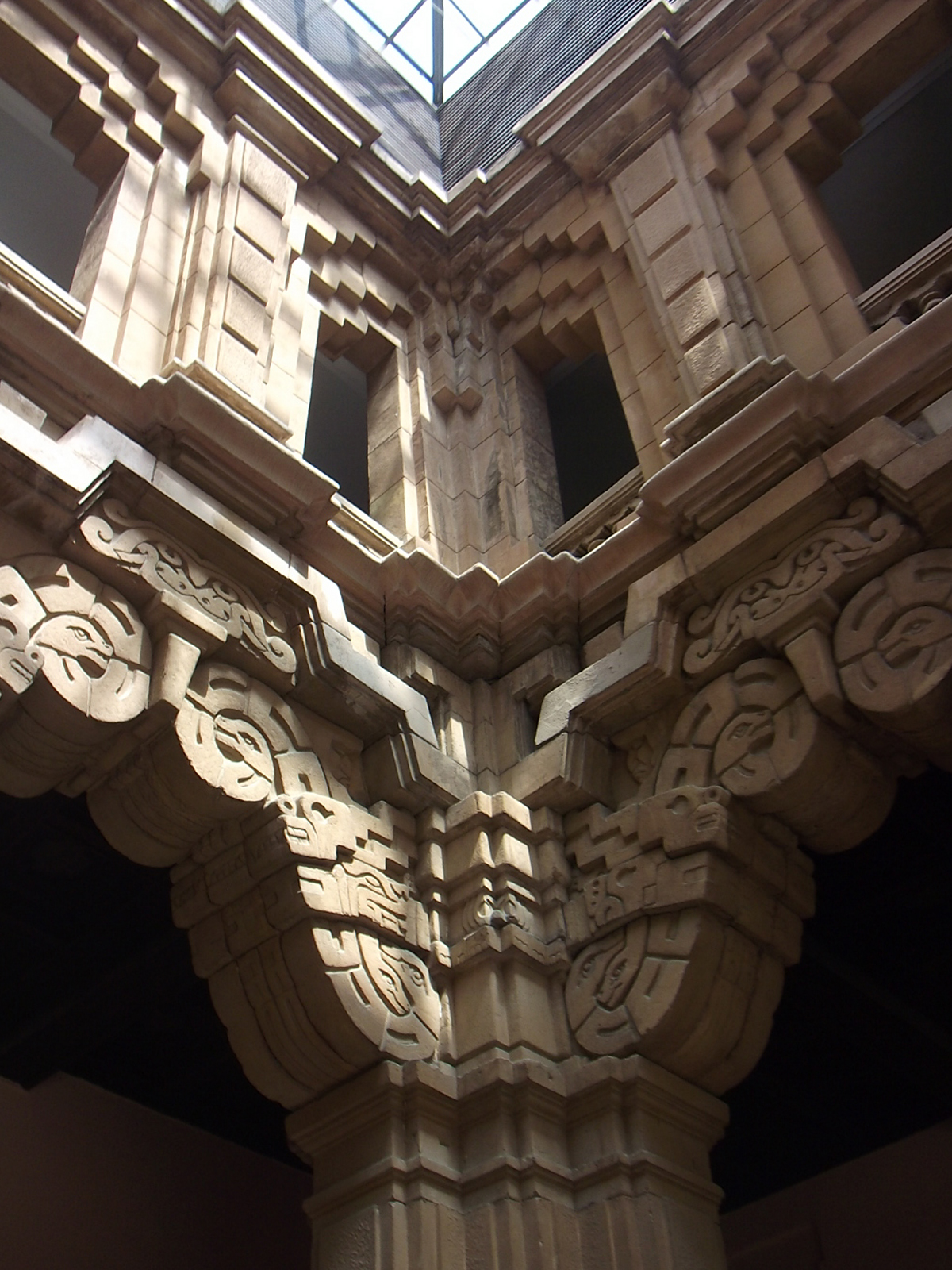|
Teatro Lope De Vega Sevilla
The Lope de Vega Theatre ( es, Teatro Lope de Vega) is a small Baroque Revival theatre that was built for the Ibero-American Exposition of 1929 in Seville, Spain, in the same building as the Exhibition Casino. It stands in the Maria Luisa Park just north of the Pavilion of Peru. The theater is named after the famous 16th-century Spanish playwright Lope de Vega. After the exposition the theatre had a mixed history. It suffered damage from fire and flood. At times it was closed and at times was partially restored and reopened. The building has been used as a hospital and as a trade show venue. Following its most recent renovation the theatre has become one of Seville's most important centres for cultural events. Construction The ''Pabellón de Sevilla'' (Pavilion of Seville) housing the theatre and casino was designed by the young architect Vicente Traver y Tomás. He chose a Baroque style that reflected Levantine influences. Elements of Baroque architecture were used in the ph ... [...More Info...] [...Related Items...] OR: [Wikipedia] [Google] [Baidu] |
Seville
Seville (; es, Sevilla, ) is the capital and largest city of the Spanish autonomous community of Andalusia and the province of Seville. It is situated on the lower reaches of the River Guadalquivir, in the southwest of the Iberian Peninsula. Seville has a municipal population of about 685,000 , and a metropolitan population of about 1.5 million, making it the largest city in Andalusia, the fourth-largest city in Spain and the 26th most populous municipality in the European Union. Its old town, with an area of , contains three UNESCO World Heritage Sites: the Alcázar palace complex, the Cathedral and the General Archive of the Indies. The Seville harbour, located about from the Atlantic Ocean, is the only river port in Spain. The capital of Andalusia features hot temperatures in the summer, with daily maximums routinely above in July and August. Seville was founded as the Roman city of . Known as ''Ishbiliyah'' after the Islamic conquest in 711, Seville became ... [...More Info...] [...Related Items...] OR: [Wikipedia] [Google] [Baidu] |
Ibero-American Exposition Of 1929
The Ibero-American Exposition of 1929 (Spanish: ''Exposición iberoamericana de 1929'') was a world's fair held in Seville, Spain, from 9 May 1929 until 21 June 1930. Countries in attendance of the exposition included: Portugal, the United States, Brazil, Uruguay, Mexico, Peru, Argentina, Chile, the Republic of Colombia, Cuba, Venezuela, the Dominican Republic, Bolivia, Panama, El Salvador, Costa Rica, and Ecuador. Each Spanish region and each of the provinces of Andalusia were also represented. Spain’s Dictator General Miguel Primo de Rivera gave the opening address. Primo de Rivera allowed the Spanish King Alfonso XIII to give the final words and officially open the exposition. The purpose of the exposition was to improve relations between Spain and the countries in attendance, all of which have historical ties with Spain through colonization (parts of Spanish America and the United States) or political union (Portugal and its former colony Brazil). Other countries were repr ... [...More Info...] [...Related Items...] OR: [Wikipedia] [Google] [Baidu] |
Maria Luisa Park
Maria may refer to: People * Mary, mother of Jesus * Maria (given name), a popular given name in many languages Place names Extraterrestrial *170 Maria, a Main belt S-type asteroid discovered in 1877 *Lunar maria (plural of ''mare''), large, dark basaltic plains on Earth's Moon Terrestrial *Maria, Maevatanana, Madagascar *Maria, Quebec, Canada *Maria, Siquijor, the Philippines *María, Spain, in Andalusia *Îles Maria, French Polynesia *María de Huerva, Aragon, Spain *Villa Maria (other) Arts, entertainment, and media Films * ''Maria'' (1947 film), Swedish film * ''Maria'' (1975 film), Swedish film * ''Maria'' (2003 film), Romanian film * ''Maria'' (2019 film), Filipino film * ''Maria'' (2021 film), Canadian film directed by Alec Pronovost * ''Maria'' (Sinhala film), Sri Lankan upcoming film Literature * ''María'' (novel), an 1867 novel by Jorge Isaacs * ''Maria'' (Ukrainian novel), a 1934 novel by the Ukrainian writer Ulas Samchuk * ''Maria'' (play), a 1935 play b ... [...More Info...] [...Related Items...] OR: [Wikipedia] [Google] [Baidu] |
Pavilion Of Peru, Seville
La Casa de la Ciencia (''The House of Science'') in the city of Seville, Spain is a centre for popularizing science. Along with a museum, the building houses the Andalusian headquarters of the Spanish National Research Council ( CSIC). CSIC is the largest public institution devoted to research in Spain, and the third largest in Europe. The building was opened to the public in 2008, with the goal of sharing knowledge acquired through scientific research. La Casa de la Ciencia aims to be a bridge between the scientific research community and the public, sharing contemporary scientific research and information on environmental issues. The museum achieves these goals by putting on various types of events, including exhibitions, conferences, seminars and workshops. The museum contains three permanent exhibits, one temporary exhibit and a planetarium. History The museum is housed in the Peruvian pavilion (''Pabellón de Perú''), a building of great beauty that was built in the Maria ... [...More Info...] [...Related Items...] OR: [Wikipedia] [Google] [Baidu] |
Lope De Vega
Félix Lope de Vega y Carpio ( , ; 25 November 156227 August 1635) was a Spanish playwright, poet, and novelist. He was one of the key figures in the Spanish Golden Age of Baroque literature. His reputation in the world of Spanish literature is second only to that of Miguel de Cervantes, while the sheer volume of his literary output is unequalled, making him one of the most prolific authors in the history of literature. He was nicknamed "The Phoenix of Wits" and "Monster of Nature" (in es , Fénix de los Ingenios , links=no, ) by Cervantes because of his prolific nature. Lope de Vega renewed the Spanish theatre at a time when it was starting to become a mass cultural phenomenon. He defined its key characteristics, and along with Pedro Calderón de la Barca and Tirso de Molina, took Spanish Baroque theatre to its greatest heights. Because of the insight, depth and ease of his plays, he is regarded as one of the greatest dramatists in Western literature, his plays still being ... [...More Info...] [...Related Items...] OR: [Wikipedia] [Google] [Baidu] |
Vicente Traver Y Tomás
Vicente Traver y Tomás (23 September 1888 – 15 November 1966) was a Spanish architect. His most notable works were constructed in Seville between 1915 and 1933. Biography Vicente Traver y Tomás was born in Castellón de la Plana on 23 September 1888. His secondary education was at the Santa Clara Institute in his home town. He studied as an architect in Madrid, qualifying in 1912. After completing his studies he practiced as an architect in Seville, where he remained until 1933. In 1913–15 he designed low-income housing for the city in the Real Patronato de Casas Baratas. In 1926 Traver replaced Aníbal González as chief architect and designer for the Ibero-American Exposition of 1929. After the Second Spanish Republic was declared, in 1933 he moved back to Castellón. In April 1939, at the end of civil war, he was appointed mayor of the city and remained in office until 1942. That year he became architect of the Diocese of Alicante. Works Vicente Traver created h ... [...More Info...] [...Related Items...] OR: [Wikipedia] [Google] [Baidu] |
Sevilla Casino De La Exposición
Seville (; es, Sevilla, ) is the capital and largest city of the Spanish autonomous community of Andalusia and the province of Seville. It is situated on the lower reaches of the River Guadalquivir, in the southwest of the Iberian Peninsula. Seville has a municipal population of about 685,000 , and a metropolitan population of about 1.5 million, making it the largest city in Andalusia, the fourth-largest city in Spain and the 26th most populous municipality in the European Union. Its old town, with an area of , contains three UNESCO World Heritage Sites: the Alcázar palace complex, the Cathedral and the General Archive of the Indies. The Seville harbour, located about from the Atlantic Ocean, is the only river port in Spain. The capital of Andalusia features hot temperatures in the summer, with daily maximums routinely above in July and August. Seville was founded as the Roman city of . Known as ''Ishbiliyah'' after the Islamic conquest in 711, Seville b ... [...More Info...] [...Related Items...] OR: [Wikipedia] [Google] [Baidu] |



_01.jpg)